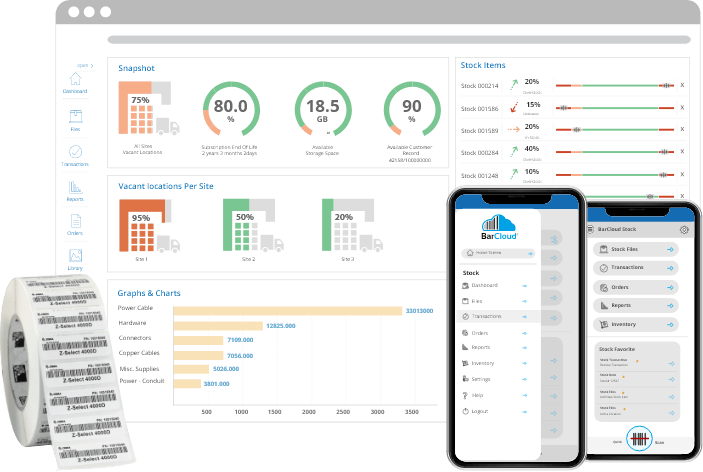Inventory Management Broken Down for You
Get to know the ins and outs of your inventory
If you’re struggling with finding the perfect inventory control system for your business specifically, look no further. We know our systems are the perfect fit for you. With our system, you can control and manage all types of inventory. If you have inventory we can help you manage it and that’s a guarantee.
In our systems, we classify inventory into five common categories; standard, serialized, serialized with quantity, batch/lot, and non-inventory items. We can help you manage different types of inventory that have varying inventory tracking requirements and safety procedures such as chemicals, raw materials, perishables and more.

Inventory System That Can Manage It All
We have everything you need, just ask us!
Our Inventory Management System manages it all from pencils to cooked meals and large medical devices. We designed our powerful inventory systems to be able to measure inventory levels no matter the type of inventory you manage, making sure you know when you hit reorder points.
Any type of inventory you have, we can help you manage it. We’ve defined the different categories for you below, but we are here to help you should you need further assistance. Feel free to contact our support or sales team and we can help you find what you need.

Defining Different Inventory Categories
Here is how we define the different inventory categories for you
As mentioned before, we categorized the different inventory types that we can help you manage. If you are still unsure if our systems can handle your inventory, please contact our support team. We are always ready to address your concerns and guarantee a solution to your inventory tracking needs.
Standard Inventory
Some examples of Standard Inventory that we can help with include nails, screws, lumber, paper, and any general items like these. This type of Inventory does not need to be controlled by lot, batch, or serial number
Serialized Inventory
Serialized Inventory are inventory items with a serial number attached to it. Some examples of this include appliances or electronics.
Batch/Lot Inventory
These items are tracked with an expiration date. Some examples of items that would have expiration dates are food, chemicals, or medical supplies.
Serialized Inventory with Quantity
These include Inventory items that have an expiration date as well as a serial number. A couple examples of Serialized Inventory with Quantity include spools of wire or chemical drums.
Non-Inventory Items
These would be inventory items that you cannot put on a shelf but can still charge for. In other words, non-inventory are not physical items like service fees. If you don’t think your inventory fits into any of the other categories, they probably fit in this one.
Inventory System Benefits
Here are the benefits of using our system
Convenience of One System
Manage a variety of different types of inventory types with one inventory management system.
Barcode Inventory Tracking
Easily create and print barcodes for each type of item.
Configurable Inventory Data Fields
Sort and filter through current inventory data in a way that makes the most sense to you.
Inventory Value
With our system you can see the value of each item before being consumed or used.
Complete Visibility
Our system will improve traceability and give accurate location data and amount of time spent in custody.
Notifications and Alerts
Receive Instant notifications via email or text for any type of Inventory Alert.
Configurable Reporting Dashboards
Configure your inventory dashboards to be the most efficient for you
Our Advanced Inventory management system comes with a variety of reporting dashboards that you can choose from. This lets you configure the interface to prioritize important information first, which improves your team’s management workflows. Our Inventory Tracking System gives users the ability to generate reports with configurable data fields. Using the specific inventory data most relevant to your business, gain full visibility of inventory trends and the status of items.

